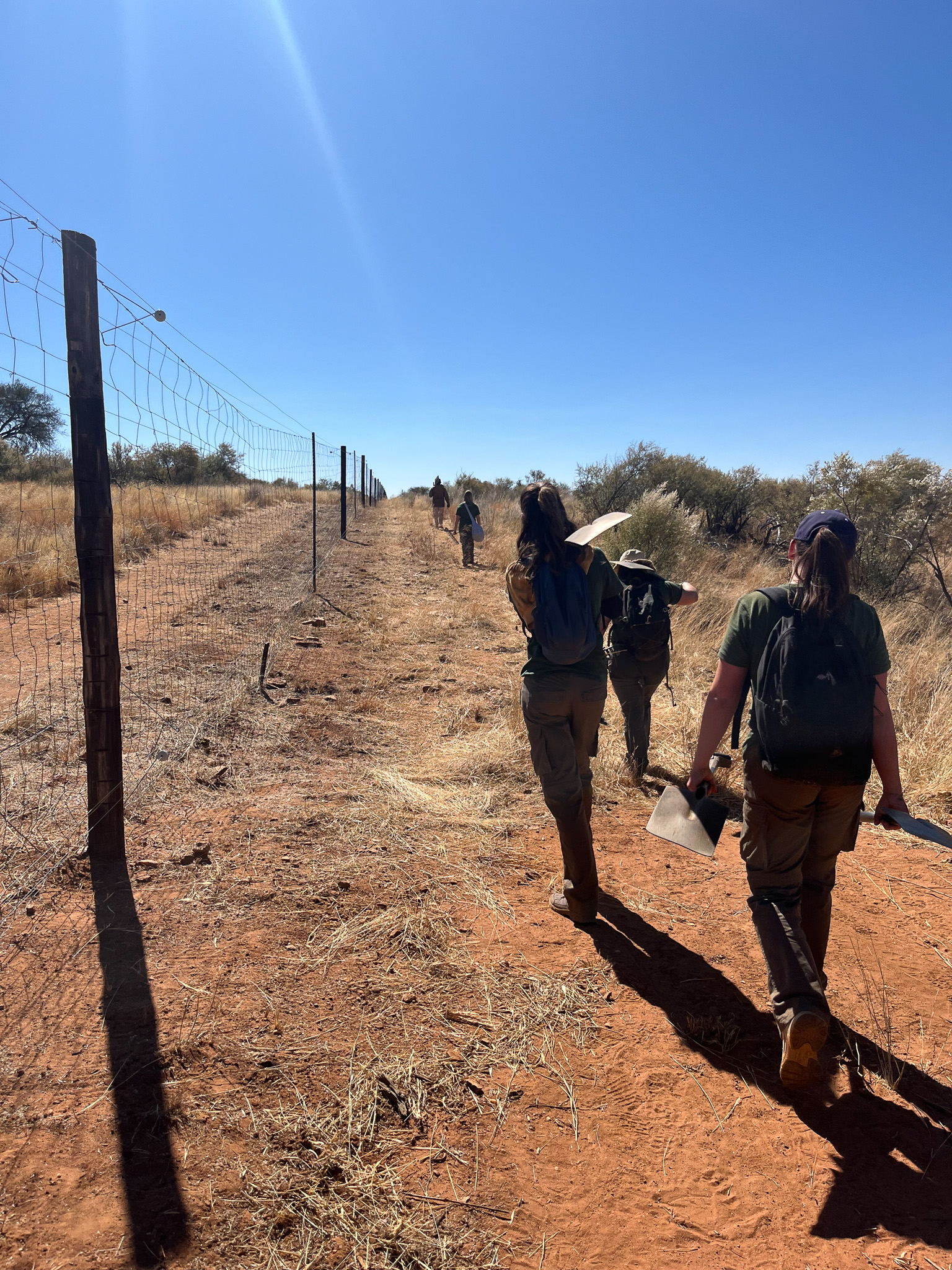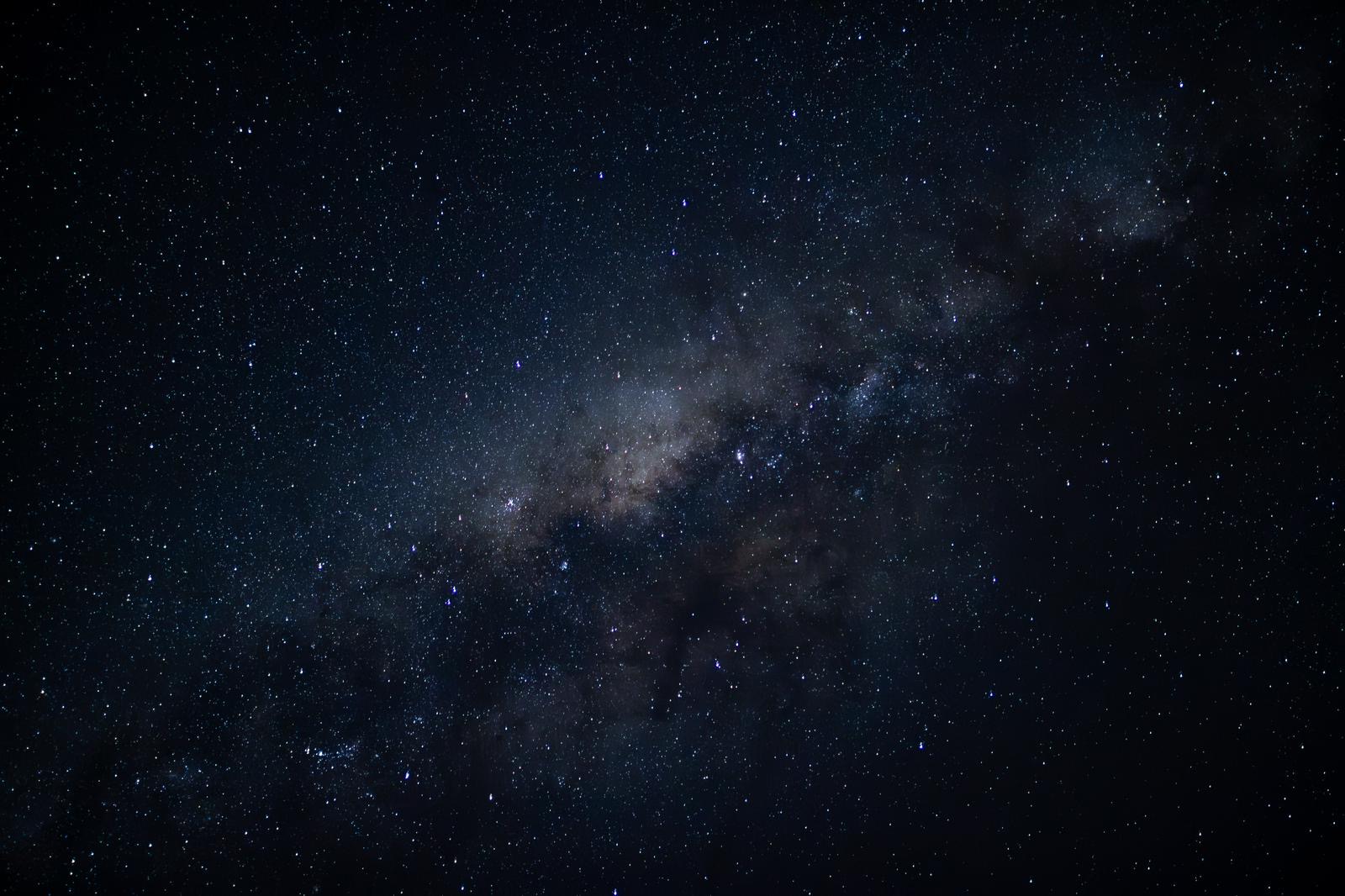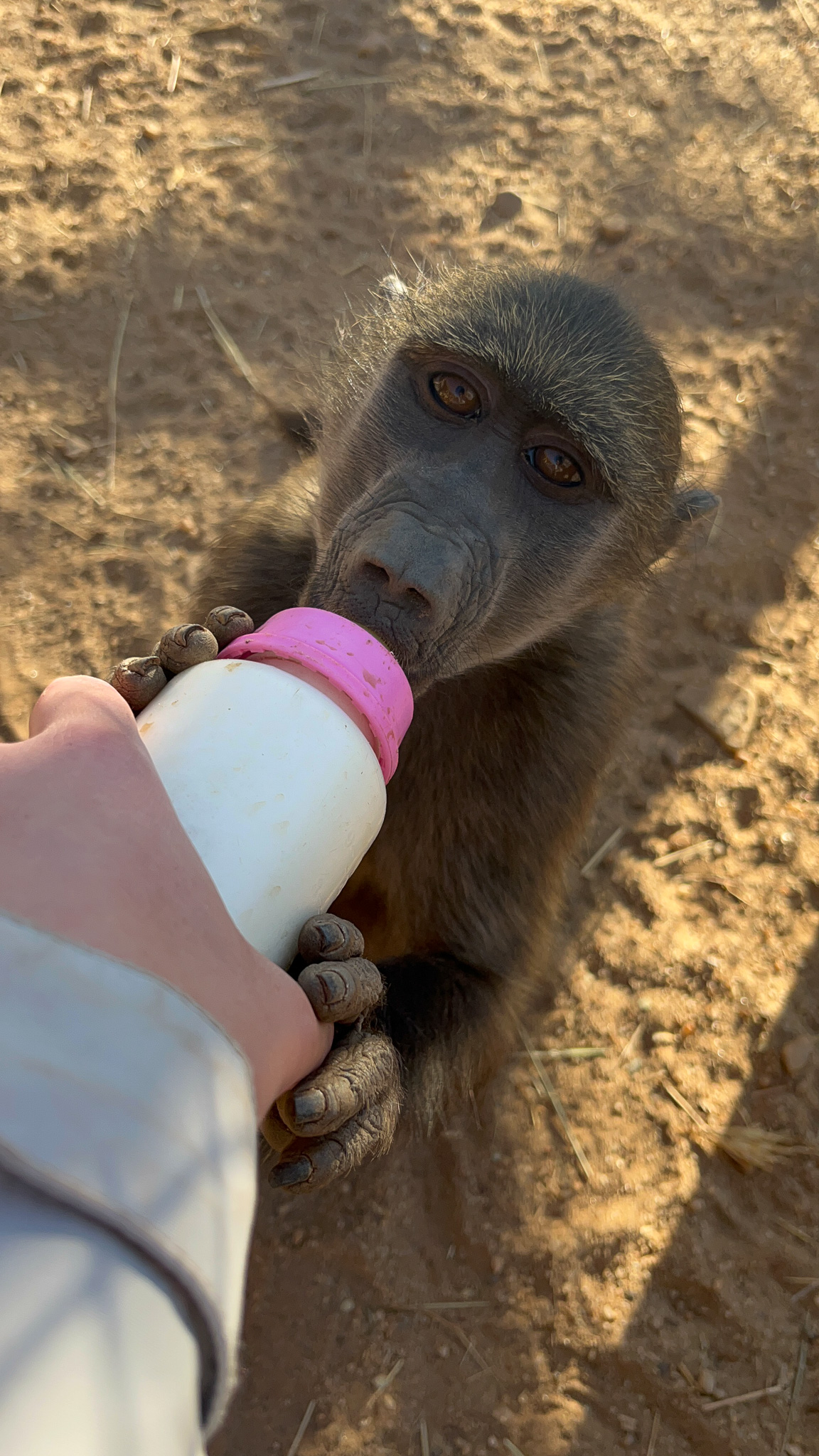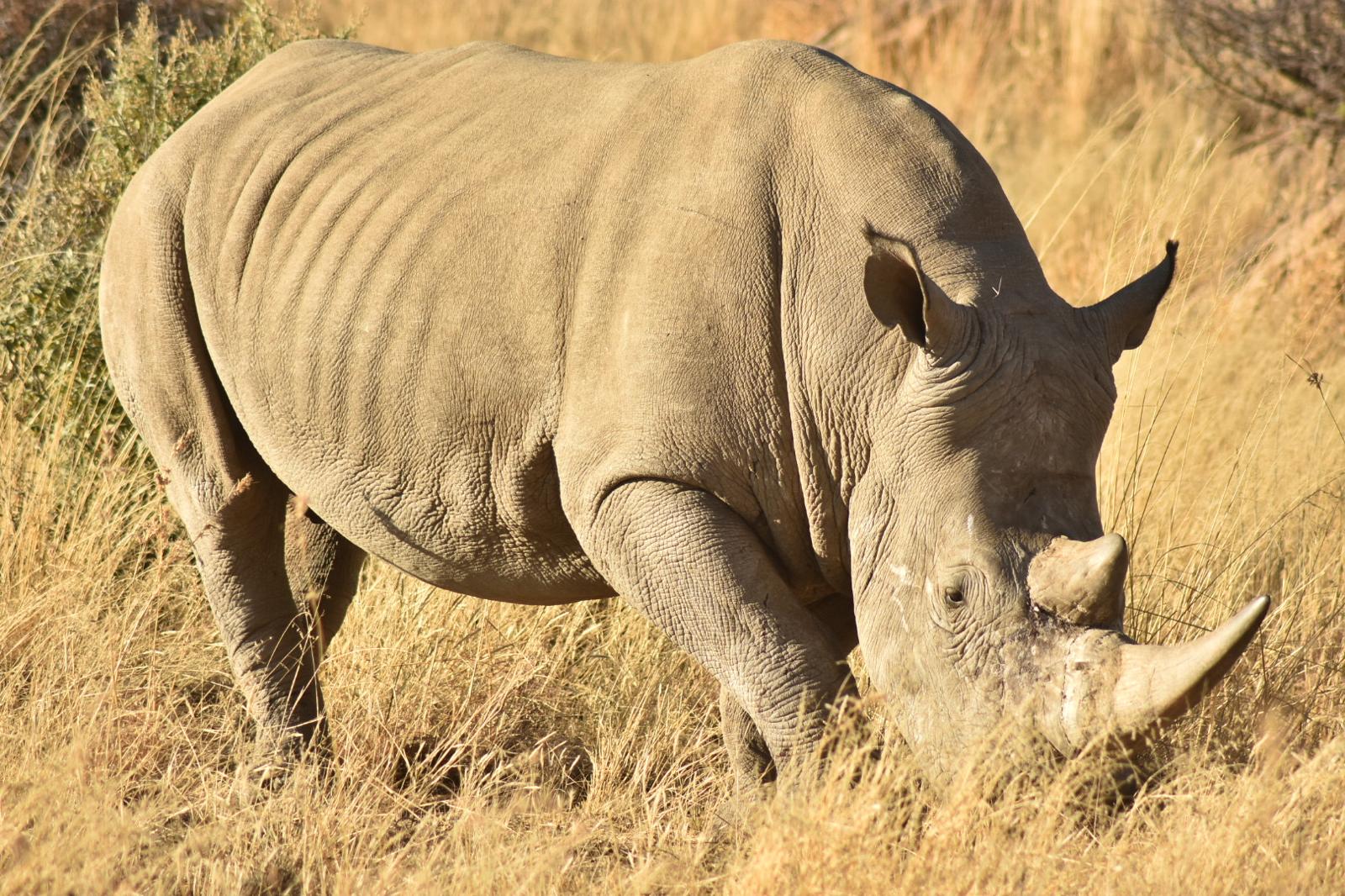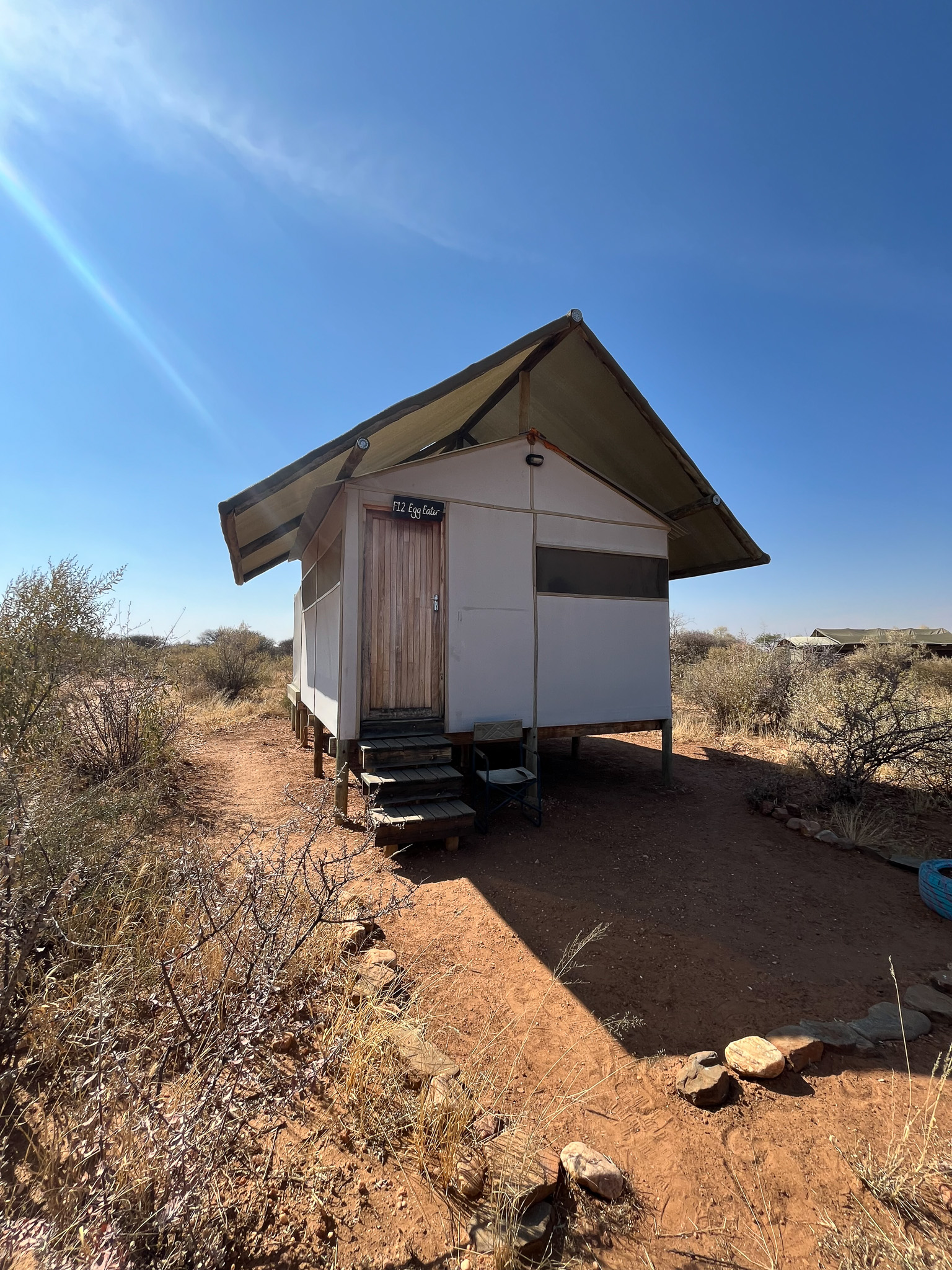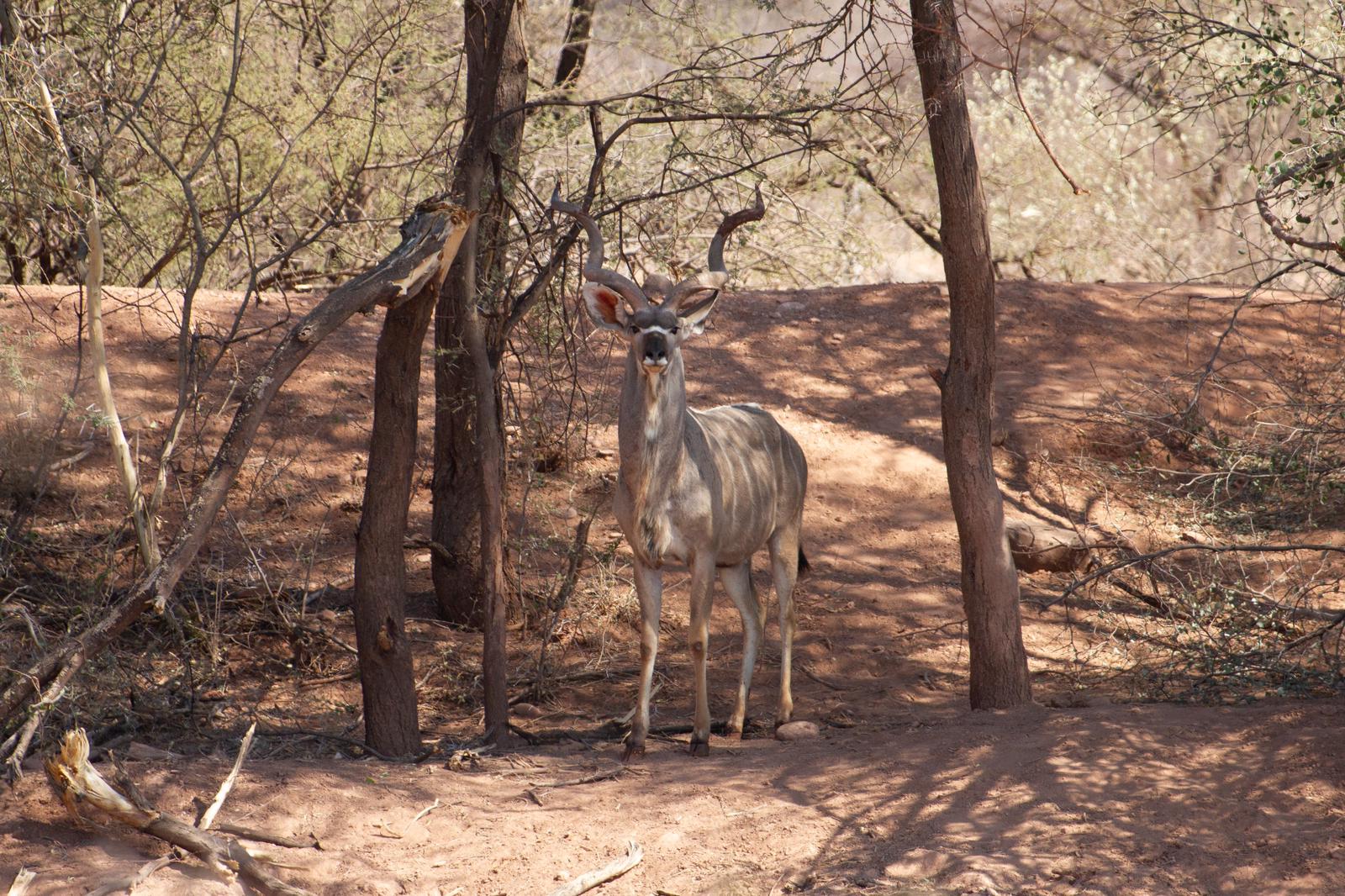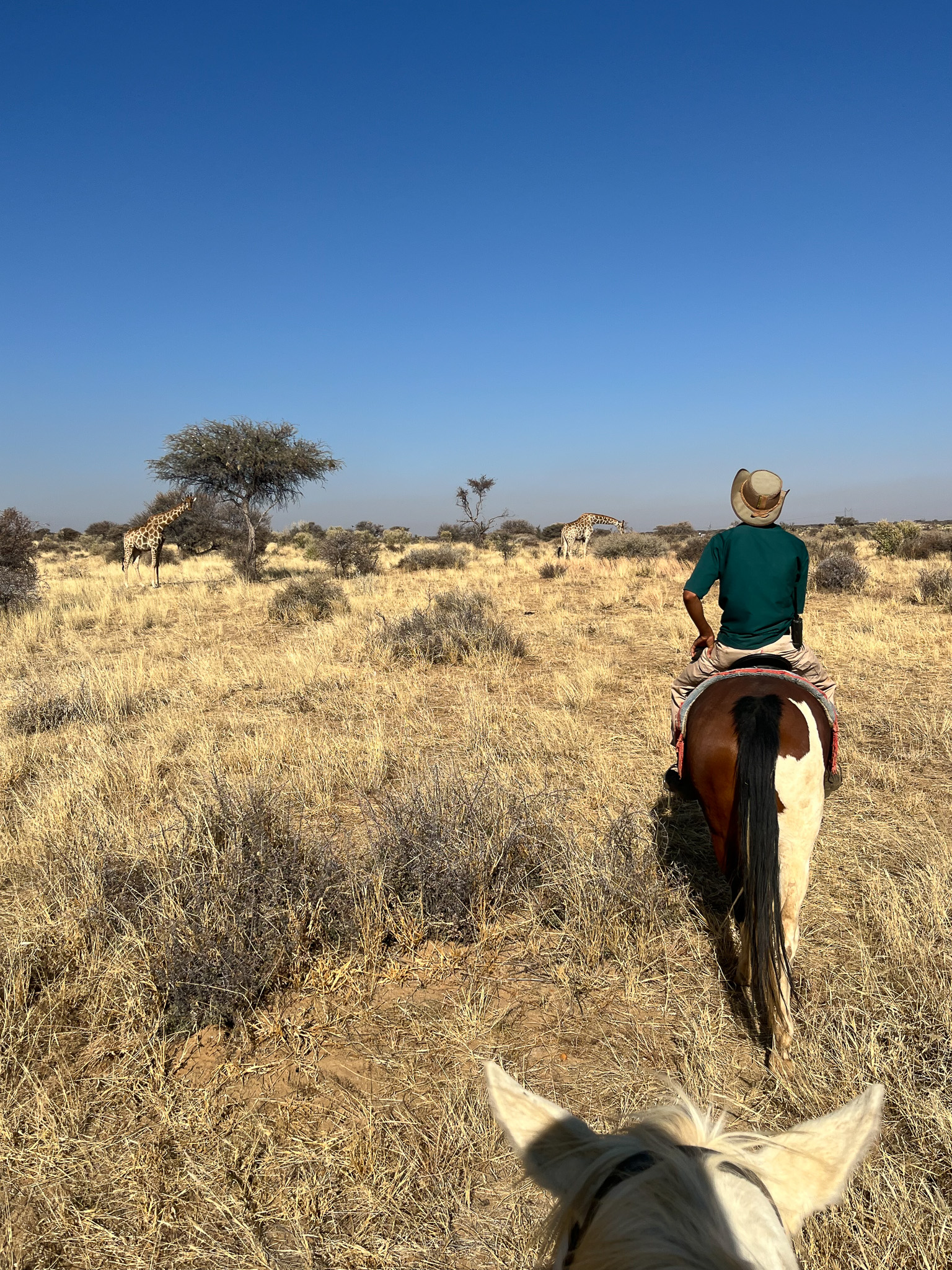Hear how our wildlife volunteer, Lucy, got on volunteering in 3 different locations across Namibia!
I spent six weeks in the Namibian Wildlife Sanctuary & Reserve. The Mighty Roar provided me with valuable information and resources to help me understand what to expect, allowing me to fully embrace the experience. I found the pre-departure webinar useful as it allowed me to get a quick response to some of my last-minute questions. The Mighty Roar team arranged a transfer from the airport to the sanctuary which helped to make my journey smooth and comfortable as a solo female traveller.
The foundation has various entities across Namibia which you can easily transfer to during your stay for a small fee. I spent a week respectively at TimBila Nature Reserve and Kanaan, but there were also opportunities to go to the coastal conservation project, Harnas Wildlife Sanctuary or Neuras Wine and Wildlife Estate.
"One of the most memorable moments for me was sleeping out in the desert without a tent, just our camping beds in the middle of nowhere. "
I spent four out of my six weeks living at the Wildlife Sanctuary, which is around a 40-minute drive from Windhoek, the capital of Namibia. The sanctuary consists of a farm which has enclosures for animals that require them, including injured wildlife and orphaned animals, and the Zannier Reserve where rehabilitated animals can roam more freely.
There were many other volunteers at the sanctuary, which made for a great social experience. Alongside the rewarding nature of the volunteering itself, it was a privilege to meet and spend time with so many amazing people from varied backgrounds, that I would not have otherwise encountered. I was given a three-person tent with lovely roommates and an outdoor bathroom. It was impressively clean thanks to the efforts of the staff. It was a culture shock when I was told not to leave toiletries in the bathroom as baboons might steal them. Mornings began with breakfast at 7am, followed by a team meeting in the food preparation area where we discussed the day’s agenda. Groups were assigned different tasks for the morning and afternoon which made the days varied and exciting.
Regular maintenance of the farm enclosures is essential, involving tasks like cleaning up excrement and old food, replacing hay, and washing surfaces, as well as cleaning and refilling waterholes. I was impressed by the sustainable resourcing method for food preparation, where local shops donated their recently expired food, which was then combined with separately sourced and chopped fruits and vegetables to feed the smaller animals. One of my favourite activities was giving the young orphaned baboons their milk bottles. The sanctuary’s caring approach was clear in the personalised carnivore feeding plans tailored to maintain the animals’ optimal health. For example, a three-legged cheetah named Lucky, who was caught in a bear trap, is regularly weight monitored and fed appropriately to ensure that she does not put too much pressure on her remaining legs.
To provide enrichment, we took the resident baboons on walks in the surrounding reserve, giving them the opportunity to explore new environments and allowing the orphans to interact with older individuals. We also set up a 500-meter rope pulley system, where a piece of cloth was attached and pulled along the line at high speed to simulate prey. This setup was designed to encourage the cheetahs to chase and mimic their natural hunting behaviour which was amazing to witness.
A crucial part of our efforts was helping the anti-poaching unit, composed of both humans and canines. The dogs are trained to find animal horns, ammunition and marijuana which are often telltale signs of poachers. We helped to train the dogs’ obedience, then ran an agility course and watched their aggression training. While responding to poachers is crucial, the team also engages in proactive measures, such as conducting regular on-foot patrols to deter poachers from entering the reserve. We learned to identify the footprints of various animals and the lengths to which poachers go to disguise their own tracks.
When I was a rhino ranger for two days, we spotted and identified rhinos by their unique ear notches. We encountered six rhinos, including a baby, and assessed their body condition to determine whether they were eating appropriately. We also conducted a night patrol, using a safari vehicle, to deter poachers. Surprisingly, despite being in Africa, I found myself feeling frozen as temperatures dropped to below 0oC in the evenings. In the morning, we tested the voltage of the electric fences to make sure they were working correctly and to minimise the risk of wildfires.
One of the volunteers' favourite activities was horse-riding, which offered a unique and rewarding experience. We were able to ride surprisingly close to the roaming wildlife and check on their well-being. During one of these rides, I had the incredible opportunity to see a giraffe and her two-week-old calf, both thriving in their natural habitat.
In the evenings, the volunteers would gather around the fire to enjoy card games, including Uno, or play pool. Meals were served buffet-style, reminiscent of a school dinner, with a strong emphasis on meat, typical of the African diet. Overall, the food was delicious, and offered a great opportunity to try something new.
On Fridays, the local primary school children would put on a delightful performance for the volunteers. The students, children of farm workers from grades 0 to 7, were eager to showcase their talents. Their enthusiasm and energy were truly infectious as they sang and performed traditional dances that held deep cultural significance, creating a vibrant and uplifting atmosphere that captivated everyone.
One weekend, I joined a trip to central Windhoek to explore the vibrant craft market and local shops. Later, I attended a joyful Sunday prayer service at a local church led by the pastor. Unlike traditional British services, this gathering encouraged attendees to dance and move freely, creating a lively, communal atmosphere that was wonderful to experience.
I left the Wildlife Sanctuary to join a team of five other volunteers for a week in the Kanaan Desert. Efforts here are focused on preserving the habitat and maintaining the minimal fencing. As a result, I assisted with a variety of different tasks to those at the farm, since there are no animals in enclosures.
The landscape, with its striking sand dunes, provided a fitting backdrop for our game counts. We recorded the distance and angle at which we spotted various wildlife along a specific route to gather information about the populations living in the reserve. Accompanied by Bushman, the owner’s dog, we tackled several tasks that contributed to the reserve's upkeep.
One of the most memorable moments for me was sleeping out in the desert without a tent, just our camping beds in the middle of nowhere. We enjoyed a traditional braai, where meats are cooked on a fire, and even made our own bread. The stars were truly indescribable, and I was fortunate enough to see a couple of shooting stars. It was a night that reminded me of the profound beauty of nature and the joy of simply being present in the moment.
My final week was spent in the 33,500 hectares of the TimBila nature reserve, alongside seven other volunteers. The reserve provides a protected home to animals that would otherwise have died in areas of drought and human-wildlife conflict.
During our time there, we visited a randomly generated computer plot within the reserve to conduct habitat sampling. As part of our project work, we cut back branches obstructing the road with machetes and axes to improve safety on the frequently used areas of the reserve. Afterward, we dug a trench between tents to allow the implementation of Wi-Fi cables. Our volunteer group was able to complete this in 1.5 hrs, and we were told that it would normally take the maintenance team 4-5 todays to finish the task, which made us feel like we had made a positive impact. I also enjoyed the sunset hike to see the ancient bushman rock engravings and watch the sunset.
An aspect I truly admired about this location was its mission to achieve self-sustainability. We visited their onsite farm, where they are working to grow their own fruits and vegetables to provide for employees, volunteers and visitors.
The people I met and the memories we shared will stay with me forever, and I am thankful to The Mighty Roar for making that possible. I feel fortunate to have contributed to the conservation efforts during my time there, making a positive impact on the lives of the animals and enriching my own life in the process. I would definitely recommend the project; I had the time of my life!
